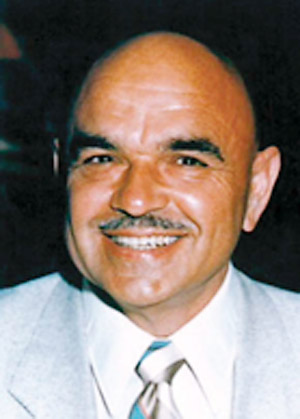Autumn 2014–
Winter 2015
In Memoriam
Albert W. Erickson, 1929-2013
Sources: Wildlife Professional 8(3):79 and the Erickson family
Al Erickson was known for his expertise in bear biology and wildlife management, which frequently led him to extreme latitudes to conduct research on marine mammals.
Born in Chicago and raised in Michigan, Al received his BS and PhD degrees from Michigan State University. Before coming to the UW, he held several wildlife-related positions, including associate professor at the University of Idaho, curator of mammals at the University of Minnesota’s Bell Museum, and regional director of the Alaska Department of Fish and Game, Anchorage.
In 1975, Al came to SAFS (then UW Fisheries), where he remained until retiring in 1993. At Fisheries, he con-ducted seven research tours to Antarctica to study killer whales, seals, and other marine mammals. In honor of his efforts, the Advisory Committee on Antarctic Names designated a series of bluffs in Antarctica the “Erickson Bluffs.” Al also pursued black bear studies in Alaska.
Al was a very colorful and direct person, and a great story teller, which is no surprise given the wealth of material he accrued from his adventures in the field. When he returned from field seasons in Alaska or elsewhere, his colleagues would gather in the lunch room for the latest installment of the “Tales of Erickson.” Whether with research colleagues or family and friends, he gained a reputation for frequently coining new words on the spot (“Al-isms”).
He was absolutely fearless in the wild, whether chasing a bear cub into the woods to tag it, or taking a harrowing ride down a long hill in his suddenly brakeless truck—while hauling a trailer—all of which he handled with his typical aplomb.
Retirement just meant a new phase in a busy life for Al. After he left Fisheries in 1993, he became a farmer, rancher, and hunting club owner in Monroe, Washington. At the age of 74, he took up track and field, distinguishing himself several times as Washington State, US, and World Decathlon Champion for his age group.
George Pigott, 1929–2014
Sources: The Seattle Times, Journal of Aquatic Food Product Technology, and Barbee Tucker-Pigott

Photo courtesy of Barbee Tucker-Pigott.
George Pigott grew up in Seattle, attending Roosevelt High School, where he began his life-long love of Big Band music (he played trombone). As an officer in the Army Chemical Corps, George served in Korea and participated in the Nevada A-bomb tests.
At the University of Washington, George earned BS, MS, and PhD degrees in Chemical Engineering. He took a faculty position in 1963 at the then UW College of Fisheries. He taught numerous courses and mentored many graduate students through the College’s Institute of Food Science during his 37 years at UW, and served as the Institute’s director for 10 years. He especially valued ongoing friendships with his graduate students, delighting in their successes.
George was well known for attracting students from around the world. One of his students, Om Agarwala, said: “On the first day of lectures, Dr Pigott [introduced] all his graduate students: ‘Om from India, Soliman from Egypt, Tarky from Chile, Sutton from South Africa, Gunnar and Per from Norway, Sophia and Chu from Taiwan…and we do have one from USA, Patty Stevens’!”
George’s wife, Barbee Tucker-Pigott, described George’s research: “He is best known for emphasizing ‘total utilization’ of seafood. He often said that there is no such thing as waste, only secondary by-products.” For example, he developed a hydrolyzed fish fertilizer using fish carcasses.
With his students, George investigated diverse aquatic food science issues such as improving surimi quality and using soybean meal in salmon diets. And he was among the first scientists to promote the health benefits of omega-3 fatty acids. After he retired, he continued his interest in total utilization: Using post-processing fish carcasses, George developed commercially viable smoked salmon snack products.
George authored more than 200 published technical papers and several book chapters, and was founding editor of the Journal of Aquatic Food Product Technology (JAFPT). (Barbee served as associate editor.) He traveled worldwide on behalf of numerous industrial companies, the World Bank, and the United Nations. He was a Fellow of The Institute of Food Technologists.
In his tribute to George in the JAFPT, longstanding colleague Michael Morrissey noted, “George was a long-term member of the Pacific Fisheries Technologists (PFT). [At the UW], he helped the PFT grow and become an important bridge between academic institutions, the National Marine Fisheries Service, and the seafood industry.” On a lighter note, he added, “George…always seemed a bit larger than life, with a booming voice and bald head that seemed to glow from all the thinking that was going on inside it!”
